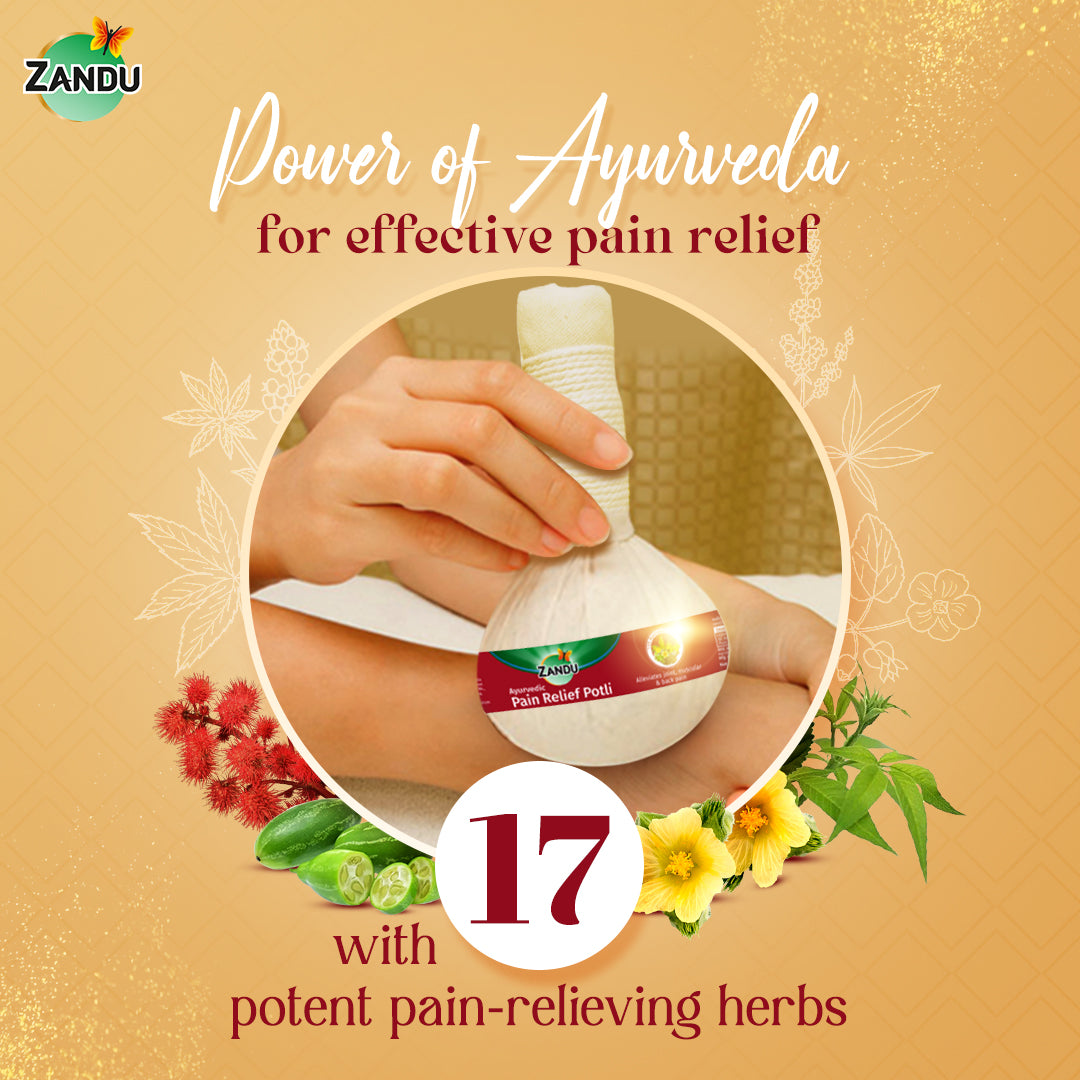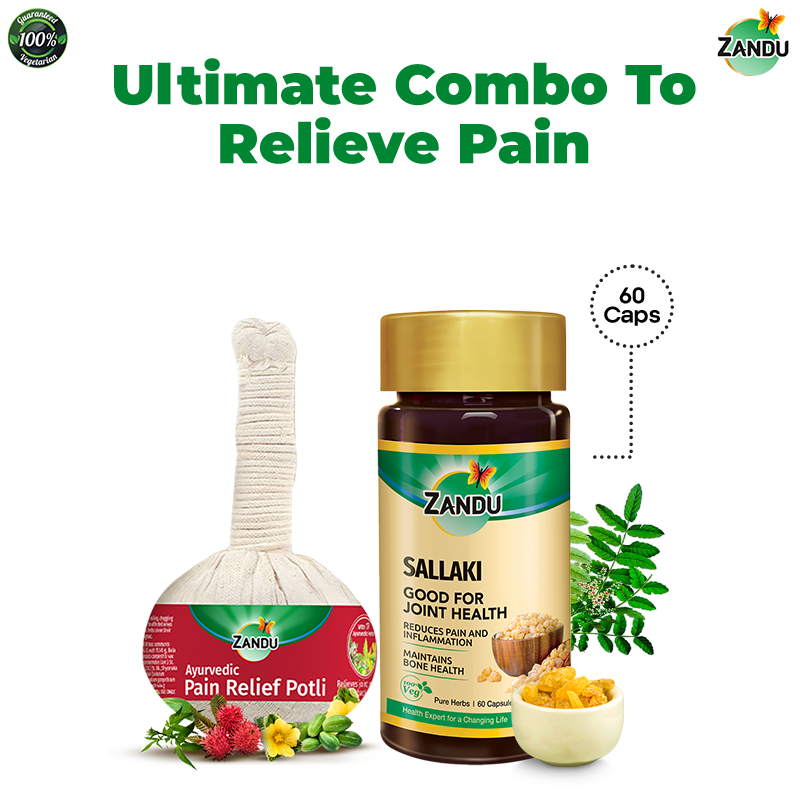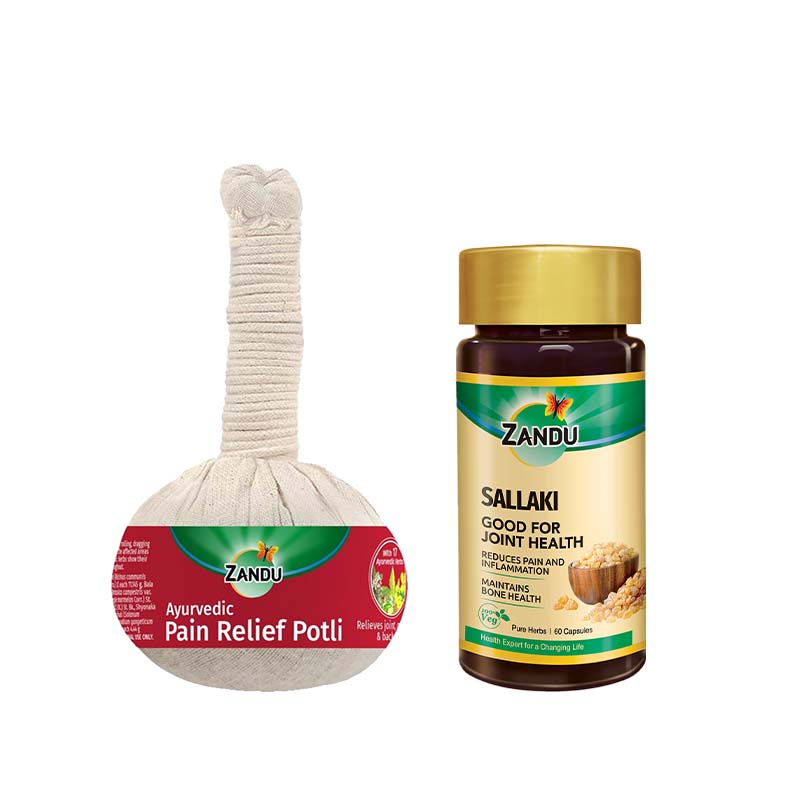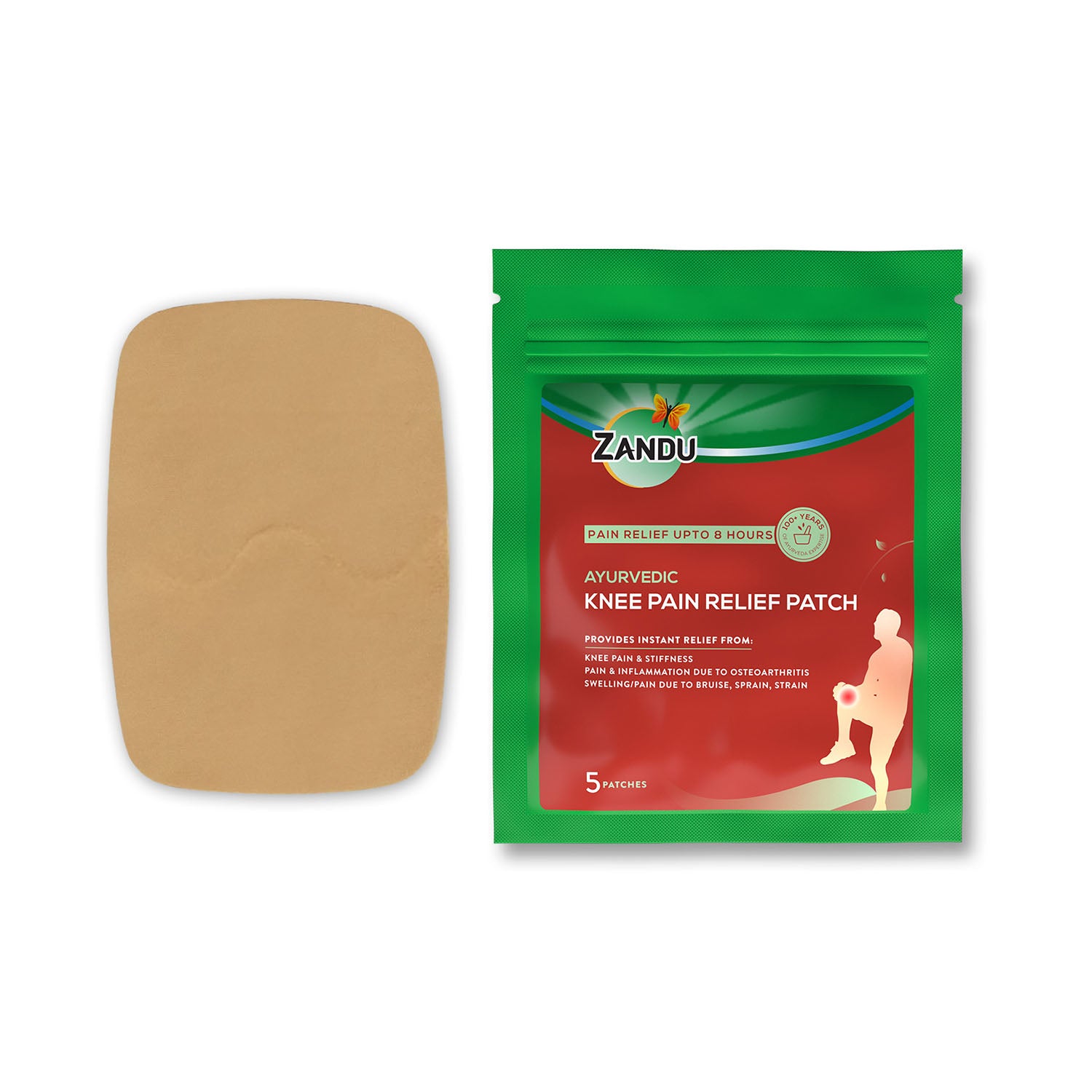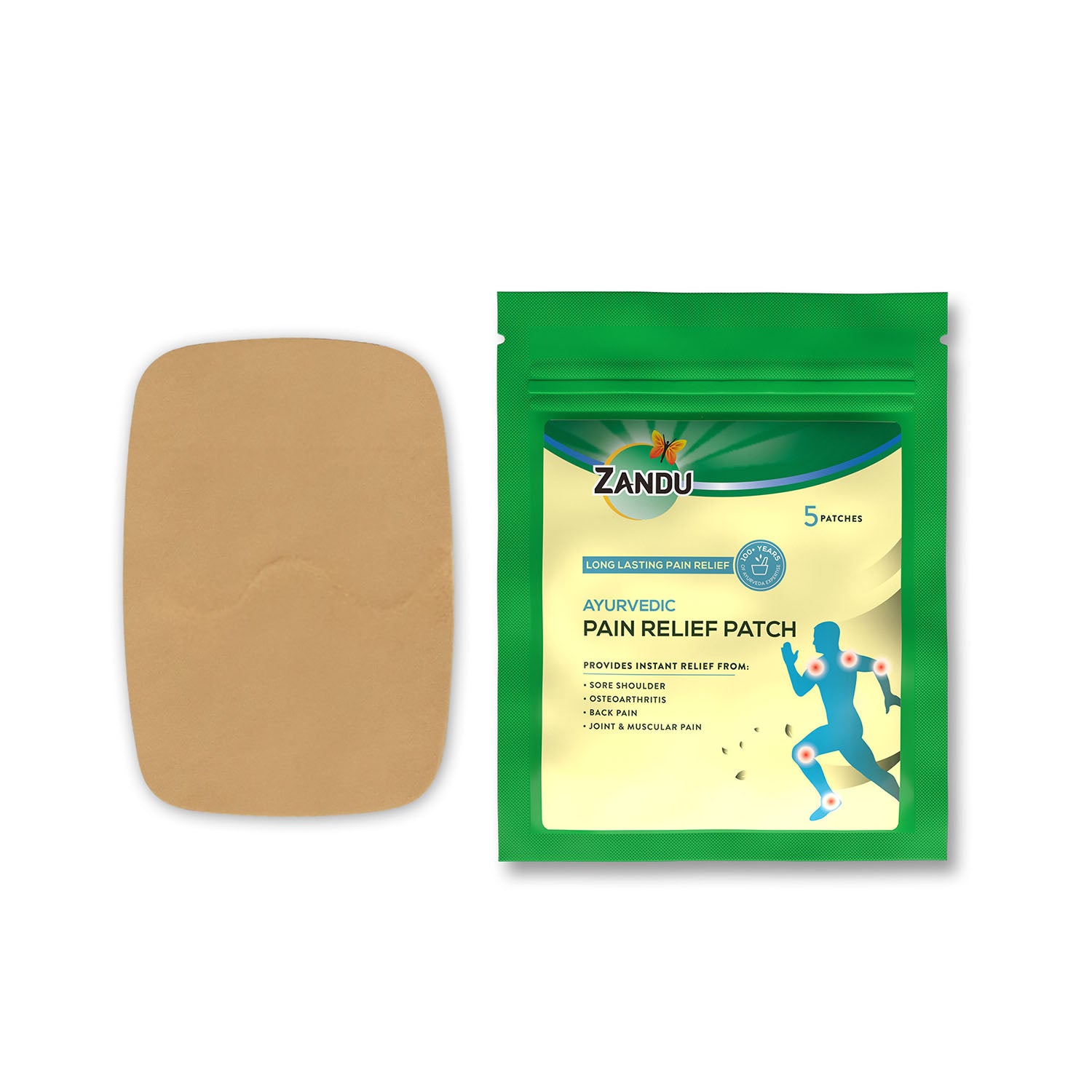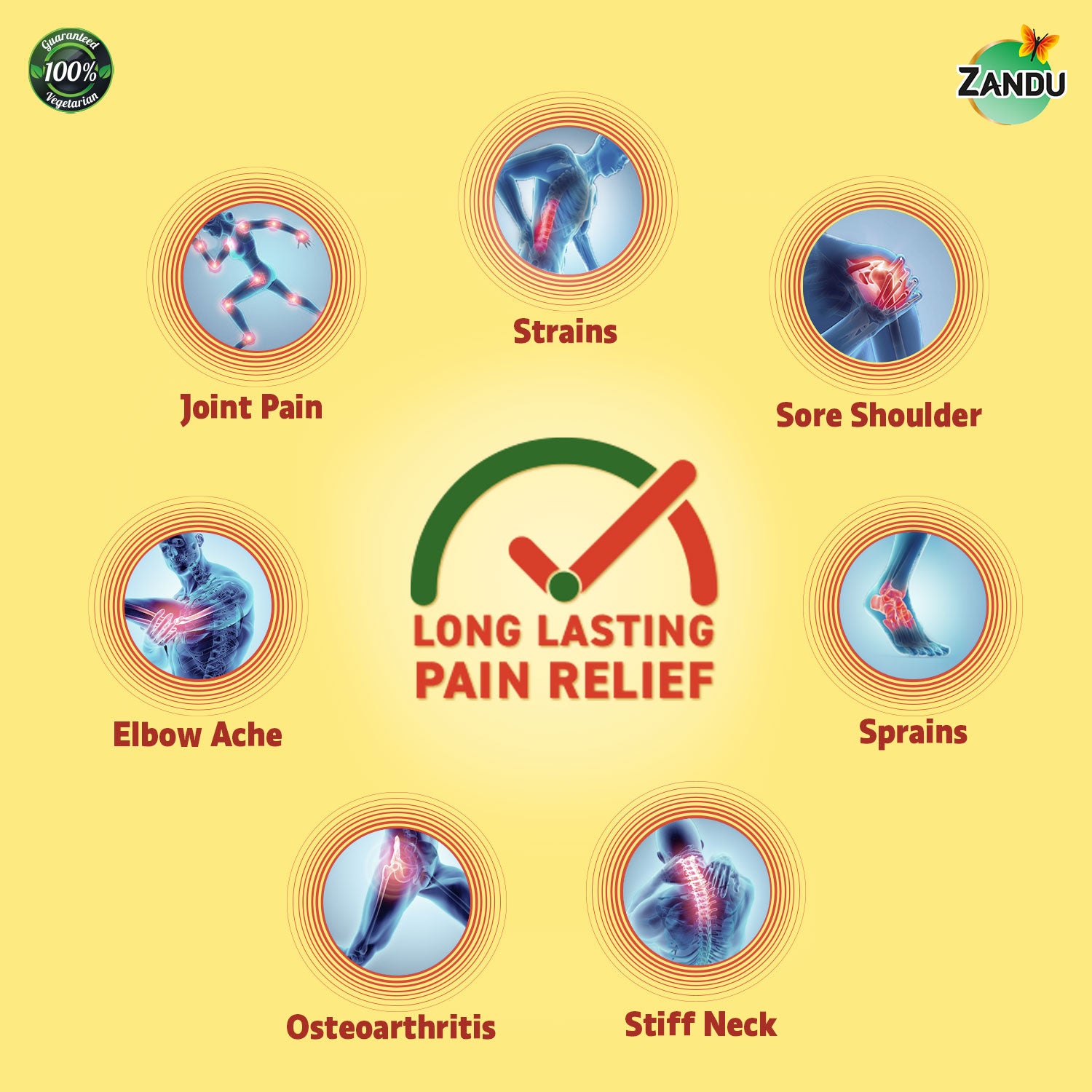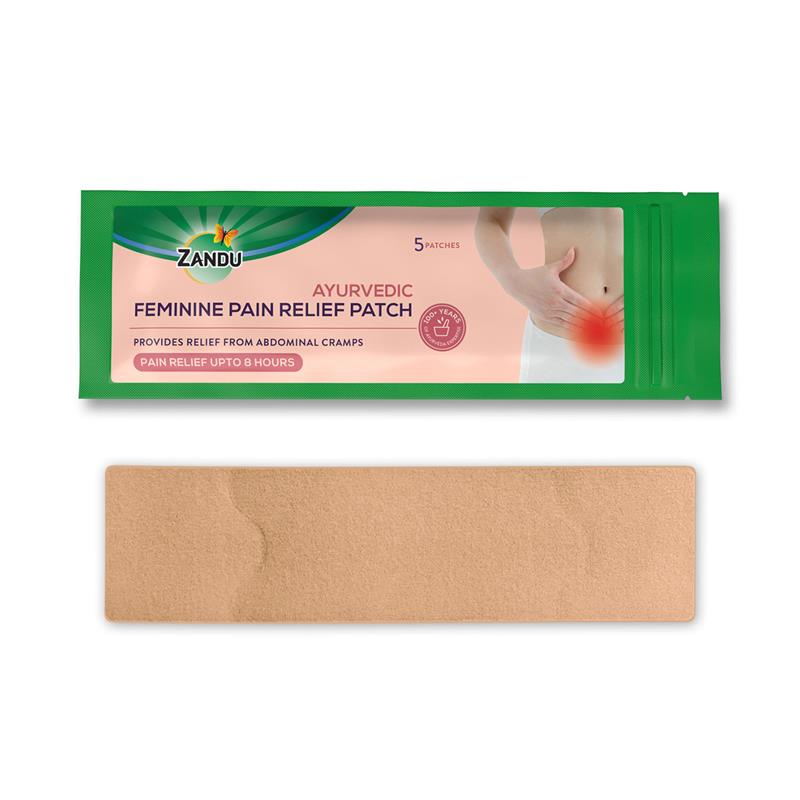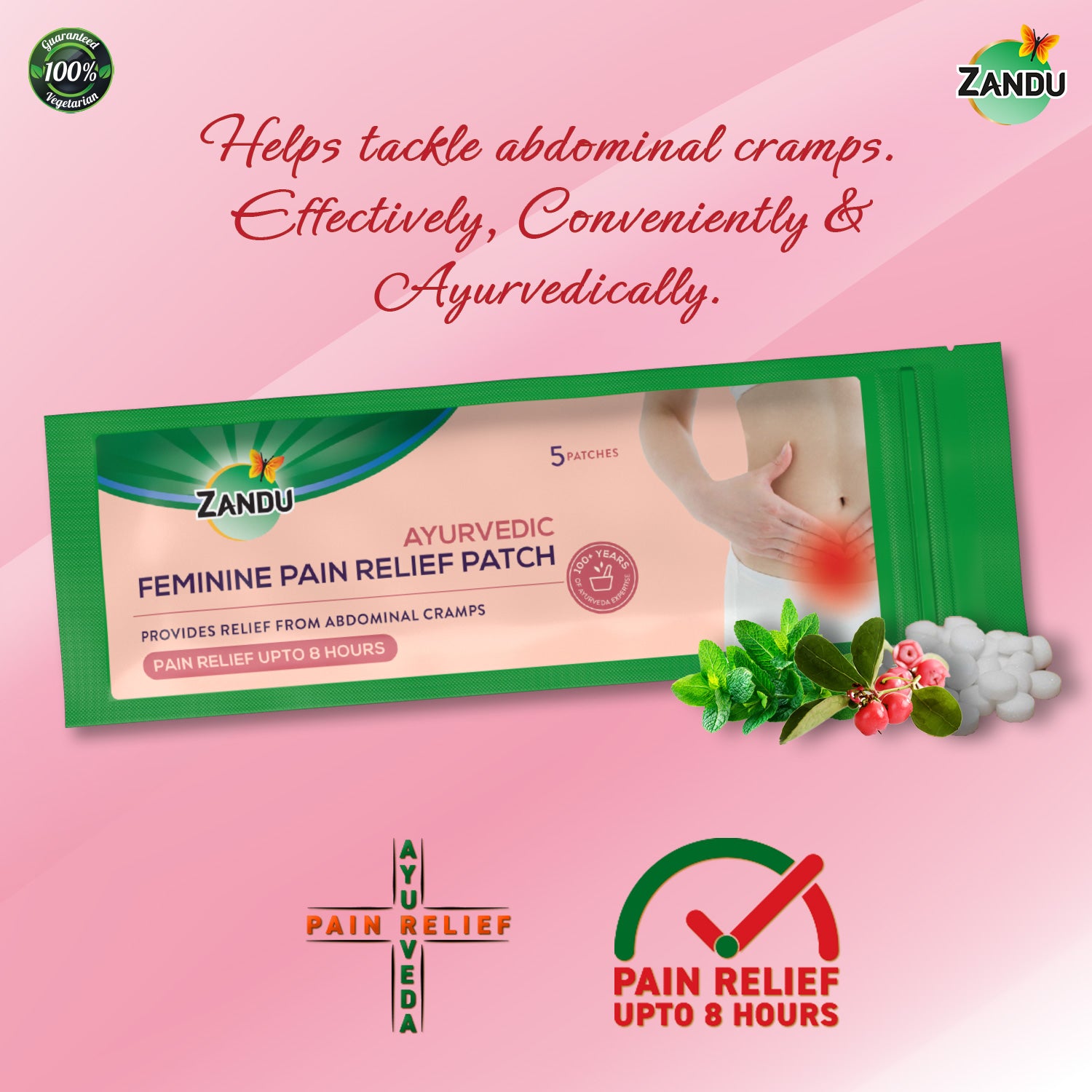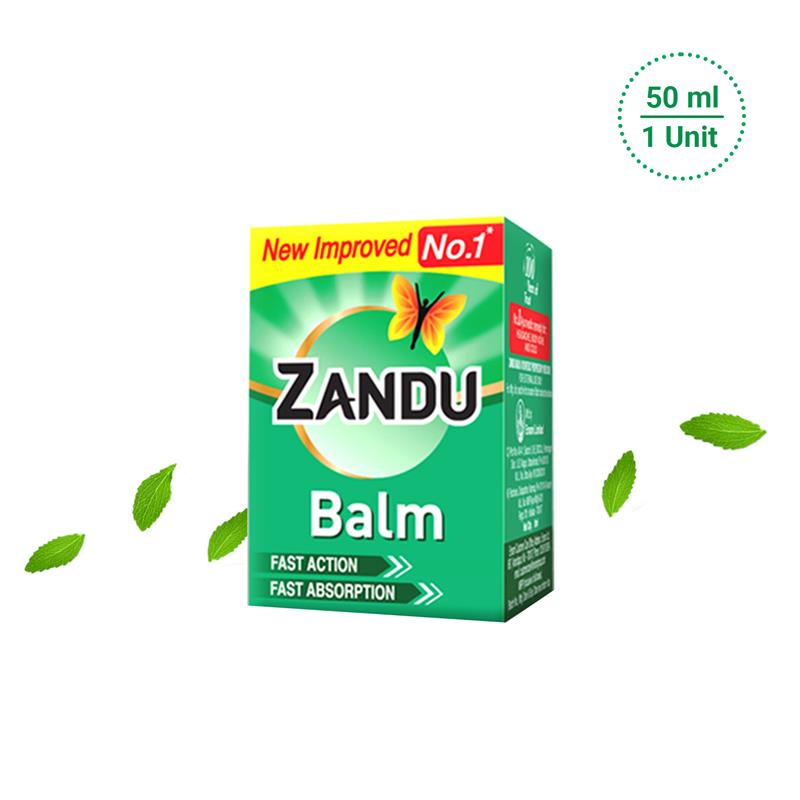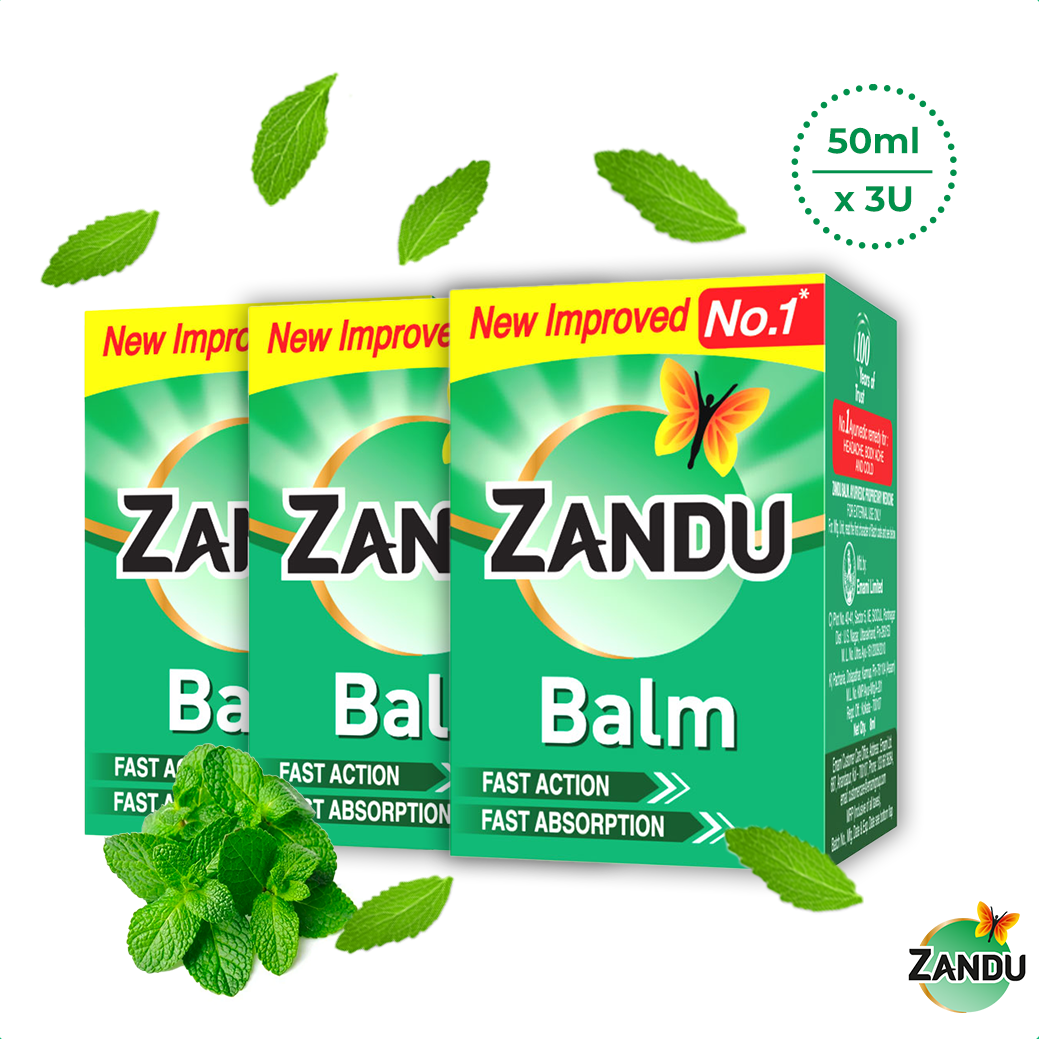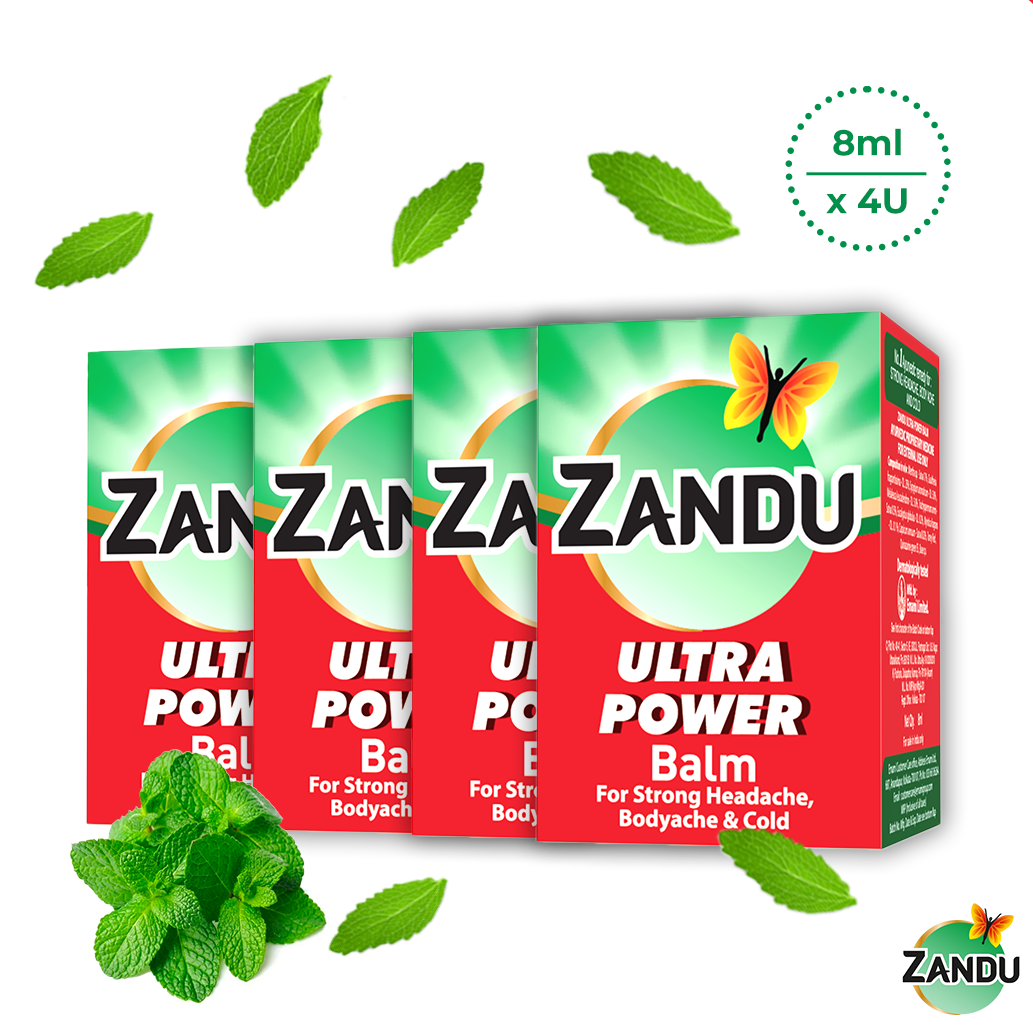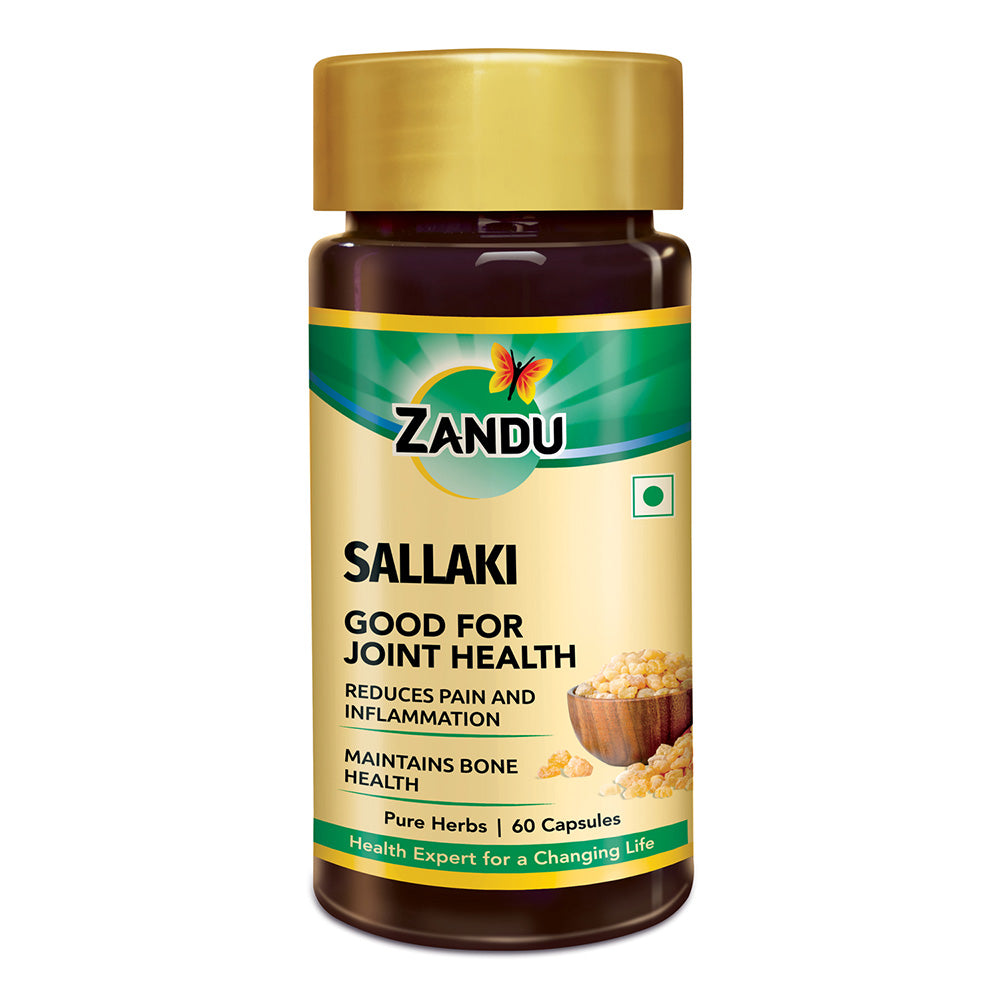Zandu Pain Relief Potli
Sale price
₹360
Regular price₹515 30% off
Zandu Ultimate Pain Relief Combo
Sale price
₹723
Regular price₹1,033 30% off
Zandu Knee Pain Relief Patch
Sale price
₹304
Regular price₹468 35% off
Zandu Pain Release Patch
Sale price
₹163
Regular price₹233 30% off
Zandu Pain Relief Patch for Cramps
Sale price
₹135
Regular price₹280 52% off
Zandu Balm 50ml (Pack of 2)
Sale price
₹323
Regular price₹350 8% off
Zandu Ortho Vedic Oil (100ml)
Sale price
₹193
Regular price₹278 31% off
Zandu Sallaki Capsules
Sale price
₹200
Regular price₹250 20% off
Some natural painkillers in Ayurveda include Brahmi, Yavani, Jatamansi, and Haritaki. Taking natural painkillers is the best because it does not cause any side effects.
Ayurveda focuses on balancing the body's energies, or doshas, to promote overall health and well-being. It uses a holistic approach by addressing the root causes of pain and promoting balance in the body.
It is beneficial for various types of pain, including joint pain, muscle pain, headaches, back pain, and menstrual cramps. It aims to alleviate pain by addressing imbalances in the body.
Ayurveda uses herbs like turmeric, ashwagandha, ginger, boswellia, and guggul for their anti-inflammatory and pain-relieving properties.
Vata dosha is responsible for pain in the body. It leads to toxin buildup, weakens the body, and makes it more susceptible to injuries.
We offer a wide range of products, including tablets, capsules, oils, balms, and more, which are formulated using traditional Ayurvedic principles.
To choose the right Zandu product, consider the type of pain you're experiencing and search on Zandu by ingredients. Once confirmed, you can order with the best offer possible.


